United States, Mexico and Canada Finalize New Trade Agreement: USMCA
October 11, 2018 The month of October ushered in a new trade agreement: the U.S.-Mexico-Canada Agreement (USMCA), which is designed to replace the longstanding North American Free Trade Agreement (NAFTA). The new agreement will allow the U.S. dairy industry to continue developing new markets while eliminating Canada’s trade distorting Class 7 policy.
The month of October ushered in a new trade agreement: the U.S.-Mexico-Canada Agreement (USMCA), which is designed to replace the longstanding North American Free Trade Agreement (NAFTA). The new agreement will allow the U.S. dairy industry to continue developing new markets while eliminating Canada’s trade distorting Class 7 policy.
Over the last several months, NMPF and the U.S. Dairy Export Council (USDEC) worked closely with the U.S. government on the three-country talks as confidential private sector trade advisors. Staff members were enmeshed in intensive consultations with U.S. trade negotiators to help hammer out a workable deal with Canada following the conclusion of U.S.-Mexico negotiations in late August. NMPF issued a joint industry release welcoming the conclusion of the treaty modernization process, and is now in the process of reviewing the details of the final deal.
While Canada’s protectionist stance on dairy trade was a prominent sticking point in the negotiations, the USMCA also includes other key factors of relevance to the dairy industry. Among those is the preservation of a 24-year old trading framework base that will allow the sector to continue developing new markets.
The new agreement offers some expansion of dairy access to the Canadian market and new disciplines intended to tackle Canada’s use of harmful pricing programs to dump an escalating volume of dairy proteins onto global markets. On both fronts, implementation and adherence to the agreement will be a critical factor in how those provisions play out for U.S. dairy as the agreement is implemented in the coming years.
“This agreement, when implemented, should give us additional marketing opportunities that will allow us to provide high-quality American dairy products to Canada, which means we’ve made incremental progress,” said Jim Mulhern, president and CEO of NMPF. “We appreciate that the Trump Administration continually raised the profile of our issues at the negotiating table.”
The agreement also includes valuable new commitments on food safety-related rules to strengthen their transparency and basis in sound science, as well as new provisions aimed at tackling the misuse of geographical indications (GIs) that erect barriers to the sale of U.S. cheeses relying on common food names. On this front, the deal incorporates new due process requirements for handling GI applications, and for the first time ever, includes a non-exhaustive list of products for which additional naming restrictions would not be permitted. Names on that list include important varieties widely produced in the United States, like mozzarella, cheddar and provolone.
With Mexico, our neighbor to the south and strongest trading partner, the deal preserves the agreement’s duty-free dairy trade provisions. NMPF has continued to stress the need to address the U.S. steel and aluminum tariff issues that have resulted in Mexico’s corresponding retaliatory tariffs on U.S. exports like cheese. This critical element must be solved to fully restore tariff-free U.S.-Mexico trade.
“To reap the full benefits of USMCA, the retaliatory tariffs on dairy products as well as U.S. steel and aluminum tariffs must be removed,” said Mulhern. “Hard economic times have hit farm country and these tariffs only continue to compound the negative impact U.S. dairy producers are experiencing and will continue to experience until lifted. Our famers need reassurance that our top export markets can continue at their normal trading conditions, and the focus should turn to pursuing new trade agreements that will expand U.S. dairy exports.”
No New Farm Bill Before Fall Elections, but Key Dairy Programs Will Continue
October 11, 2018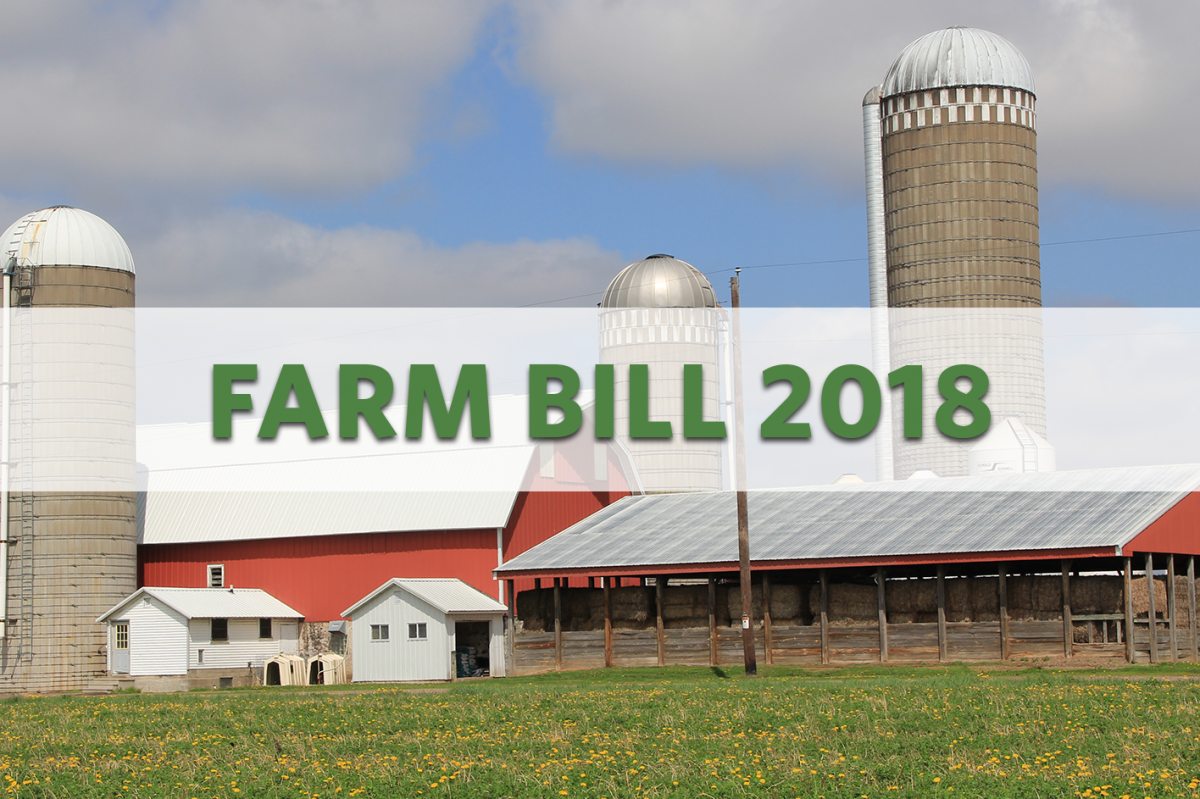 Congressional efforts to pass a new Farm Bill before Sept. 30 have failed, but several major programs, including the dairy Margin Protection Program, will continue until the end of the year. Negotiations over the bill will continue, even as of the House of Representatives has adjourned until after the midterm elections.
Congressional efforts to pass a new Farm Bill before Sept. 30 have failed, but several major programs, including the dairy Margin Protection Program, will continue until the end of the year. Negotiations over the bill will continue, even as of the House of Representatives has adjourned until after the midterm elections.
Leaders from both the House and Senate Agriculture Committees have been working to resolve differences between each chamber’s Farm Bill, including disagreements on nutrition, conservation and commodity policy changes. Dairy issues are not sticking points in the conference committee, although some differences exist in the House and Senate versions, including some provisions of the Margin Protection Program.
NMPF continues to work closely with the committee leaders on the dairy provisions and urges lawmakers to pass a new farm bill later this fall that reflects the best work from both chambers’ bills.
Should work on the Farm Bill not be completed before year’s end, Congress would need to pass an extension of the current farm bill to stave off the expiration of MPP. NMPF remains optimistic, however, that a final bill will be completed before 2019.
U.S., Latin American Dairy Industries Continue Collaboration
October 11, 2018In September, NMPF’s Jim Mulhern and Jaime Castaneda, as well as Jay Waldvogel of Dairy Farmers of America, traveled to Argentina as part of the 15th annual Pan-American Dairy Congress to discuss ongoing trade issues and ways to address those challenges to benefit producers, businesses and consumers in both the United States and Latin America.
The congress brought leaders from across the region gather to learn about industry innovation, effective public communication, government policies’ impact on the food sector, dairy’s role in child nutrition, and maintaining international competitiveness. Mulhern discussed consumer trends affecting dairy and the U.S. dairy industry’s efforts to address those trends.
The U.S. representatives at the event were able explore how science-based policies can result from better collaboration among governments. They also met with colleagues from the Pan-American Dairy Federation (FEPALE) to discuss how to put forth a unified defense against non-scientific regulations brought forward in forums like the World Health Organization (WHO), Codex Alimentarius Commission and Office of International Epizootics (OIE).
Discussion also included protecting common-name food products. NMPF explained to South American dairy representatives how Europe’s crusade to monopolize common food names like feta and muenster is a disservice to producers and consumers around the globe. U.S. Agriculture Secretary Sonny Perdue made a similar pitch at the recent G-20 meetings in Argentina: “We need to stand together against abuse of geographic indications,” the Secretary said, reflecting NMPF’s efforts to build alliances with its Latin American counterparts.
CWT September Sales Contracts Top 17 Million Pounds of Dairy Exports
October 11, 2018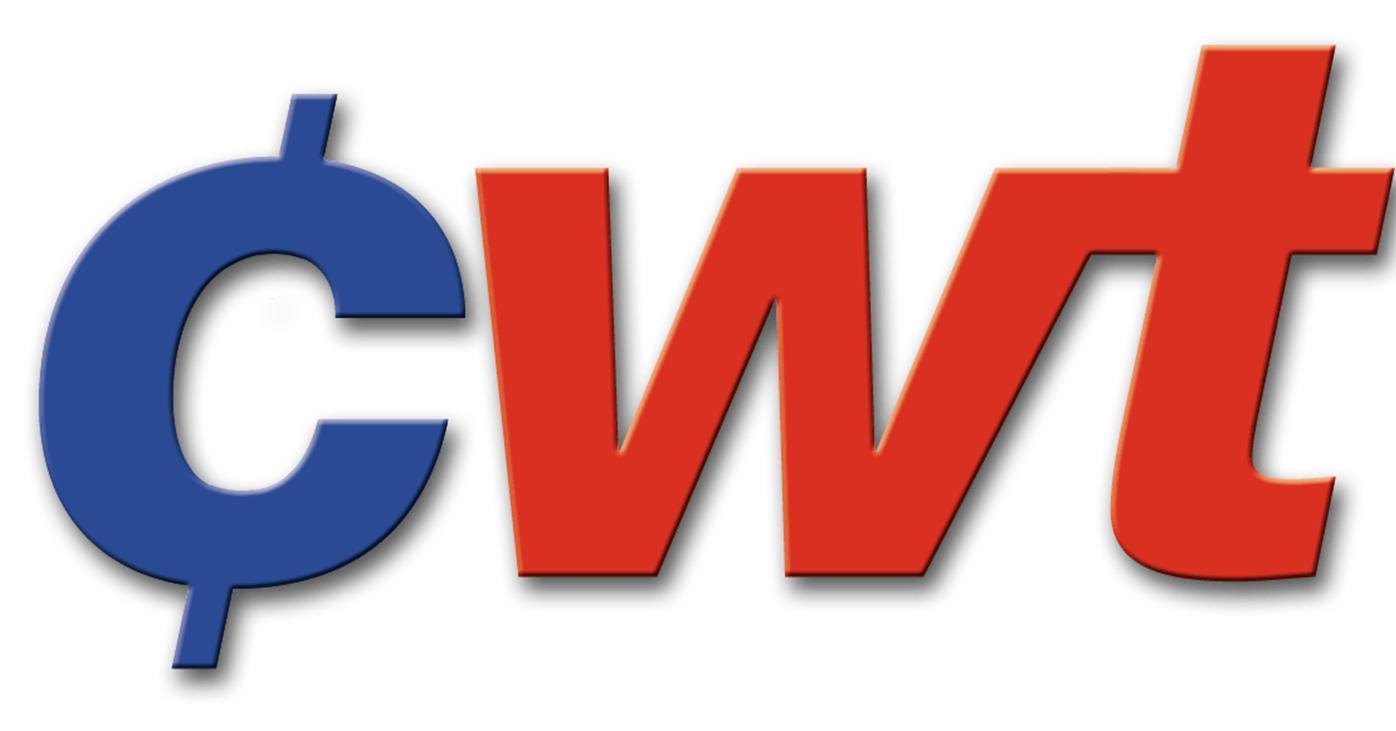 Cooperatives Working Together (CWT) helped member cooperatives secure 26 contracts to sell 3.9 million pounds of American-type cheeses and 13.5 million pounds of whole milk powder in September. The products will go to customers in Asia, the Middle East, North Africa, Central America, Oceania and South America – 13 countries overall – during the months of September 2018 through March 2019.
Cooperatives Working Together (CWT) helped member cooperatives secure 26 contracts to sell 3.9 million pounds of American-type cheeses and 13.5 million pounds of whole milk powder in September. The products will go to customers in Asia, the Middle East, North Africa, Central America, Oceania and South America – 13 countries overall – during the months of September 2018 through March 2019.
These contracts bring the 2018 total of CWT-assisted product sales to 47.56 million pounds of cheese, 12.96 million pounds of butter, and 52.06 million pounds of whole milk powder. These transactions will move the equivalent of 1.11 billion pounds of milk on a milkfat basis overseas. Totals have been adjusted for cancellations.
Helping CWT member cooperatives gain and maintain world market share through the Export Assistance program in the long-term expands the demand for U.S. dairy products and the U.S. farm milk that produces them. This, in turn, positively impacts all U.S. dairy farmers by strengthening and maintaining the value of dairy products that directly impact their milk price.
The amounts of dairy products and related milk volumes reflect current contracts for delivery, not completed export volumes. CWT will pay export assistance to the bidders only when export and delivery of the product is verified by the submission of the required documentation.
All cooperatives and dairy farmers are encouraged to add their support to this important program. Membership forms are available on the CWT website.
MPP Forecast: October 2018
October 11, 2018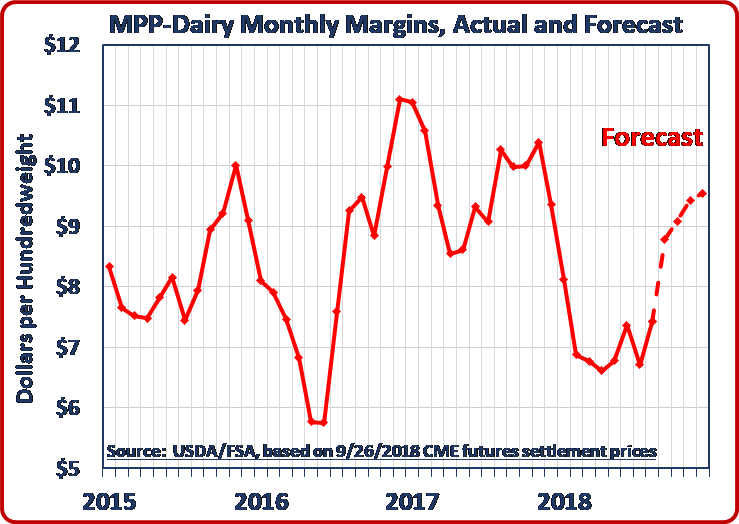
The monthly margin under the dairy Margin Protection Program (MPP) for August 2018 was $7.43/cwt., $0.71/cwt. higher than the July margin. The August all-milk price was $15.90/cwt., $0.50 higher than in July. The August MPP feed cost formula was $0.21/cwt. lower than the month before, the third monthly drop in a row. More than half the drop in the monthly feed cost was due to lower corn prices. The August margin makes seven months in a row during which the MPP margin has been below $8.00/cwt. in 2018, which is a record. The monthly MPP margin was below the $8.00 level six times during both calendar years 2015 and 2016, but did not fall below that level at all during 2017.
Dairy farmers who signed up in 2018 for $8.00 margin coverage at the lower, Tier 1 premium cost will receive a net return of $0.44/cwt. – after payment of premiums and sequestration reduction of payments – on their covered milk production for all of 2018, based on USDA’s MPP Decision Tool forecast, calculated using the Sept. 26 CME dairy and grain futures settlement prices, shown in the graph. USDA data shows that 21,372 producers signed up for the program this year: 20,177 of them at the $8.00 margin coverage level, and 17,088 of these for 90 percent of their 2018 production histories. As of Sept. 10, USDA had processed MPP payments totaling $230.4 million.
USDA’s MPP margin forecasts can be accessed online. NMPF’s Future for Dairy website offers a variety of educational resources to help farmers make better use of the program.
Joint Annual Meeting to Host Dairy Leader Panels, Political Analyst David Wasserman
October 11, 2018 In less than a month, hundreds of U.S. dairy community leaders will descend upon Phoenix, Arizona, to attend one of the largest dairy conferences in the country: the 2018 NDB/NMPF/UDIA Joint Annual Meeting. To register for this year’s event, please click here.
In less than a month, hundreds of U.S. dairy community leaders will descend upon Phoenix, Arizona, to attend one of the largest dairy conferences in the country: the 2018 NDB/NMPF/UDIA Joint Annual Meeting. To register for this year’s event, please click here.
Held Oct. 29-31 at the JW Marriott Desert Ridge hotel, this year’s meeting will again feature presentations on the strategies and programs managed by the dairy policy and promotion organizations that help U.S. dairy pursue opportunities for growth and prosperity. This year, the event will celebrate those who are “undeniably devoted to dairy.” From the breakfast table to the electricity that powers homes, the meeting will honor those who are undeniably devoted to making dairy for the world’s consumers.
This year’s program will again include NMPF’s annual Town Hall event, in which attendees will hear about the latest in dairy policy and ask questions of those representing them in Washington. Georgia farmer Zippy Duvall, president of the American Farm Bureau, will address the group, and panels of co-op and producer leaders will discuss the state of the dairy sector in 2018 and what various organizations are doing to help dairy farmers. This year’s keynote speaker is noted political analyst Dave Wasserman of the Cook Political Report (pictured left), providing an outlook on the November elections set to take place one week after the meeting.
The ever-popular Dairy Bar returns this year, featuring exhibits, games and goodies from NMPF Associate Members and Dairy Management Inc. partners. Attendees can also enjoy the fan-favorite Cheese Reception, featuring the winners of NMPF’s annual cheese contest.
Court of Appeals Decisions Consistent with NMPF Position on Clean Water Act
October 11, 2018 The U.S. Court of Appeals for the Sixth Circuit delivered two decisions on Sept. 24 that are consistent with NMPF’s comments regarding the Clean Water Act (CWA). Both decisions determined that the CWA does not extend to pollution that reaches surface waters via groundwater, reflecting a position NMPF also endorses.
The U.S. Court of Appeals for the Sixth Circuit delivered two decisions on Sept. 24 that are consistent with NMPF’s comments regarding the Clean Water Act (CWA). Both decisions determined that the CWA does not extend to pollution that reaches surface waters via groundwater, reflecting a position NMPF also endorses.
In comments submitted to the U.S. Environmental Protection Agency (EPA) in May, NMPF stated: “The bottom line is that Congress did not include the regulation of groundwater in the CWA and neither the courts, nor EPA, should extend the CWA beyond what Congress intended.”
The comments noted that “Congress discussed the inclusion of groundwater in the CWA and chose not to. EPA should make it clear via a regulation, that groundwater directly, indirectly, hydrologically connected or not is not subject to regulation under the CWA and should retract any and all past statements to the contrary.”
NMPF reminded EPA of the fiasco it created when it kept re-interpreting what constituted “oil” under the Spill Prevention Control and Countermeasures Rule. Initially, it did not apply to dairy, but over a decade EPA said it also applied to butter, then higher-fat dairy products, then ice cream and ultimately fat-free milk. Eventually, dairy was exempted. However, it is becoming clear that the courts and EPA are allowing the same scenario to unfold today.
NMPF agrees with the court that groundwater pollution is best dealt with under state and local laws and, where necessary, under the Resource Conservation Recovery Act (RCRA). There are now two Courts of Appeals that took NMPF’s position, and several against, with more cases pending.
FARM Program Introduces Farmer Advisory Council
October 11, 2018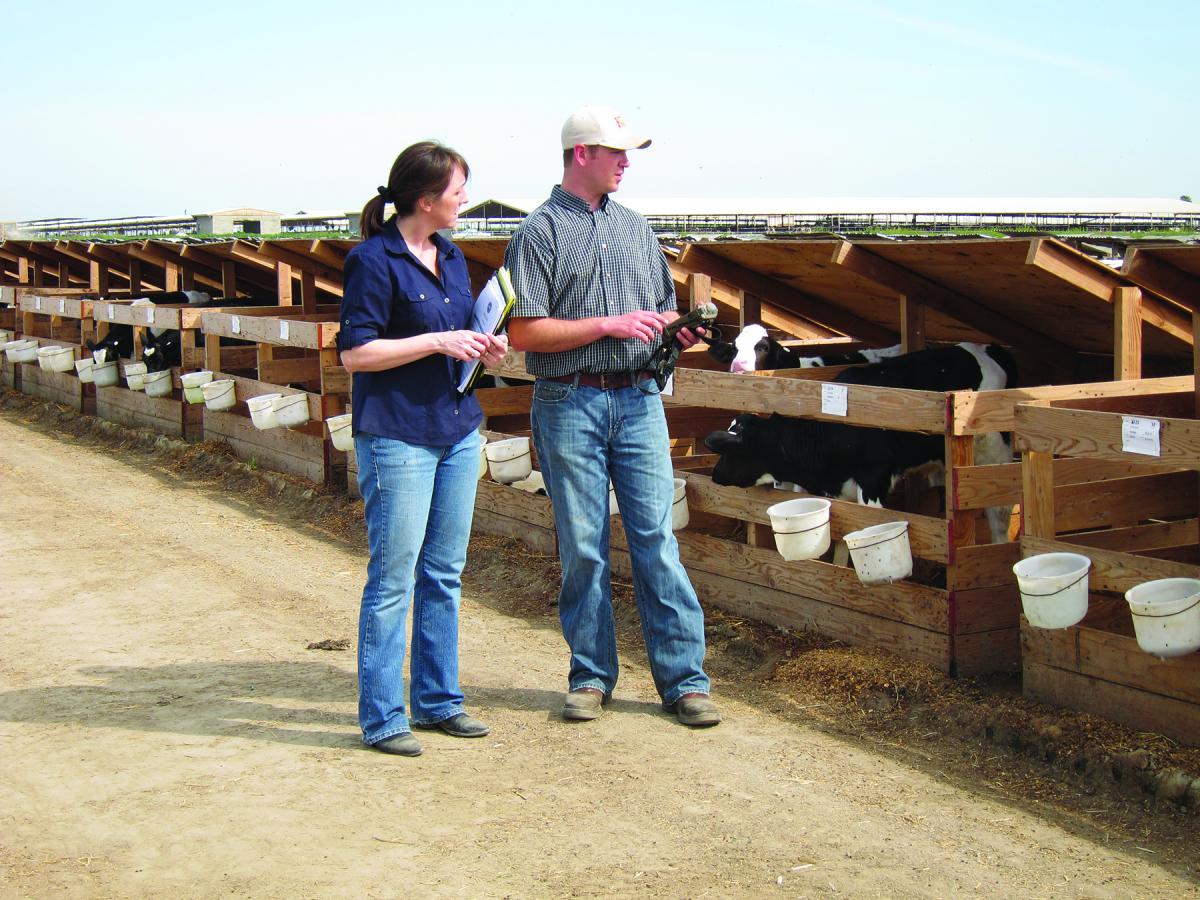 The National Dairy Farmers Assuring Responsible Management (FARM) Program has announced the founding members of its inaugural Farmer Advisory Councils. These groups provide guidance and input for consideration into the FARM Program’s ongoing and future development.
The National Dairy Farmers Assuring Responsible Management (FARM) Program has announced the founding members of its inaugural Farmer Advisory Councils. These groups provide guidance and input for consideration into the FARM Program’s ongoing and future development.
These dairy producers represent diversity in farm management style, age, geographic location and cooperative/processor representation. With their council appointment, members are also considered ambassadors and liaisons for the FARM Program and will help with answering questions and championing the program within other organizations and their regional communities. Each council member will serve one, three-year term, and are expected to attend up to two in-person meetings per calendar year and two to four conference calls annually.
Members were selected by a committee comprised of members from the FARM Technical Writing Groups and FARM Program staff based on their ability to meet the outlined expectations. The 2018 group of council members include:
|
Agri-Mark |
Nate Chittenden |
NY |
|
California Dairies Inc |
Tony Louters |
CA |
|
Cayuga Marketing |
Jeremy Brown |
NY |
|
Darigold |
Dan DeGroot |
WA |
|
DFA |
Brian Hardy |
UT |
|
First District Association |
Duane Laveau |
MN |
|
Foremost Farms |
Kristipher Scheider |
WI |
|
Grande Cheese Company |
Sandy Larson |
WI |
|
Hilmar Cheese Company |
Frank Dinis |
CA |
|
Land O’ Lakes |
Stuart Hall |
CA |
|
Land O’ Lakes |
Deb Reinhart |
WI |
|
Maryland Virginia |
Jim Biddle |
PA |
|
Organic Valley |
Leon Corse |
VT |
|
Select Milk Producers |
Mike Visser |
OH |
|
Southeast Milk Inc. |
Sutton Rucks |
FL |
|
Tillamook |
Mike Prince |
OR |
|
United Dairymen of Arizona |
Jim Boyle |
AZ |
FARM Program Launches Fourth Program Silo: FARM Workforce Development
October 11, 2018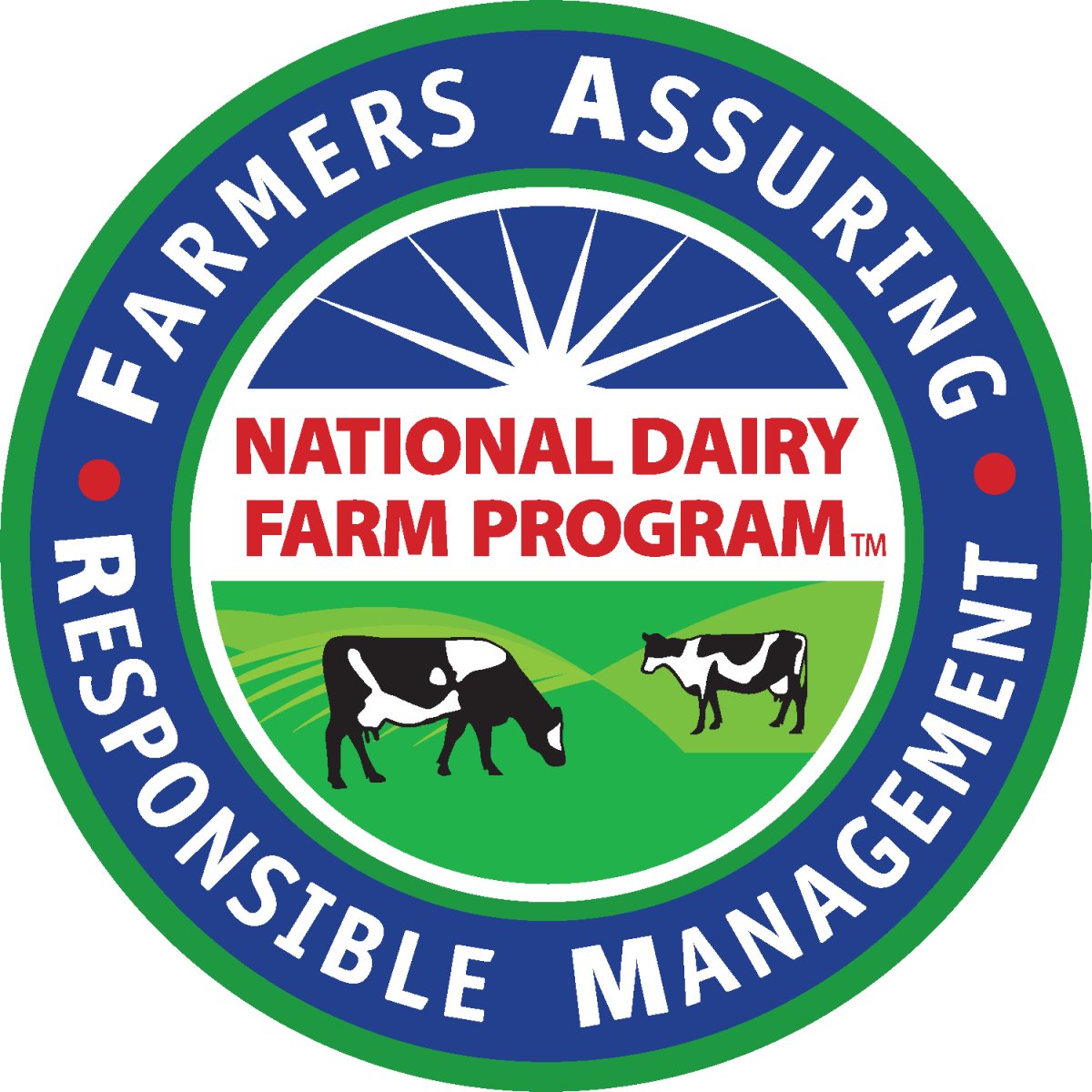 On Oct. 2, the National Dairy FARM Program announced the launch of its fourth program area, FARM Workforce Development. The initiative provides U.S. dairy farm owners and managers with educational tools that offer best management practices around human resources – including hiring, training, and supervision – and worker health and safety.
On Oct. 2, the National Dairy FARM Program announced the launch of its fourth program area, FARM Workforce Development. The initiative provides U.S. dairy farm owners and managers with educational tools that offer best management practices around human resources – including hiring, training, and supervision – and worker health and safety.
The program’s newest silo was created by stakeholders from the entire dairy value chain to provide educational materials on one of the most pressing concerns for the dairy sector. The human resources part of the program focuses on how to best attract, invest in, and retain a professional, high-quality, engaged workforce.
The safety portion outlines how farms can further cultivate and demonstrate continuous commitment to on-farm safety. For the safety portion of the initiative, FARM is collaborating with the Idaho Dairymen’s Association (IDA) to develop a best-in-class safety resource for dairy farm owners and managers.
These new educational resources will help farmers who want to broaden their understanding and implementation of human resources tools and safety practices for their employees.
Over the last year, the FARM Program gathered expert and stakeholder input through its Workforce Development Task Force of farmers, cooperative staff, academics, and other subject matter experts. This reliance on stakeholder input ensures the Workforce Development materials are technically robust and relevant to today’s dairy industry.
The educational resources will provide farm owners with resources that can assist in increasing worker engagement, reducing employee turnover and enhancing the safety of dairy farming. Some of those resources will include: state-by-state and federal legal fact sheets. the FARM Human Resources Reference Manual and the FARM Safety Reference Manual.
NMPF Announces Staff Changes to Help Reinforce Organization’s Impact
October 11, 2018 National Milk recently announced several staff changes that will strengthen and expand NMPF’s services to its members and the nation’s dairy producer community.
National Milk recently announced several staff changes that will strengthen and expand NMPF’s services to its members and the nation’s dairy producer community.
Chris Galen, NMPF’s long-time head of communications, became the organization’s Senior Vice President of Member Services and Strategic Initiatives. He now works directly under Jim Mulhern within the Office of the President and CEO, strategizing, developing and executing services to members, associate members and allied dairy organizations.
Alan Bjerga, formerly a journalist with Bloomberg, joined NMPF as its new Senior Vice President of Communications. Bjerga spent 11 years at Bloomberg as its lead writer on national farm policy issues, covering high-visibility topics like the Farm Bill, agricultural trade policy and rural economics.
In his new role, Alan will lead NMPF’s communications efforts, focusing on media relations, marketing and digital storytelling. Highlighting the importance of agriculture and the work of NMPF’s members to key audiences is a crucial task during a challenging time for the industry, Bjerga said.
“My work has long been focused on the well-being of rural communities, many of which depend on dairy,” Bjerga said. “It’s an honor to have this opportunity to serve farmers and their families in a new and compelling way.”
Mulhern also announced that Jaime Castaneda, NMPF’s long-time head of strategic initiatives and trade policy, is now its Senior Vice President of Policy Strategy and International Trade. In addition, Nicole Ayache joined National Milk earlier this fall as Director of Sustainability Initiatives. Prior to joining NMPF, Ayache worked as a consultant for the dairy industry’s animal care and sustainability program, Farmers Assuring Responsible Management (FARM), as well as the Innovation Center for US Dairy.
“These organizational changes reflect our drive to expand service to our members in what has been a challenging time for dairy farmers,” said Mulhern. “We just entered our second century as an organization – and we’re not slowing down. Strengthening our team through these staff changes will ensure a strong and capable organization for years to come.”
FDA Requests Comments to Better Understand Dairy Labeling Issue
October 11, 2018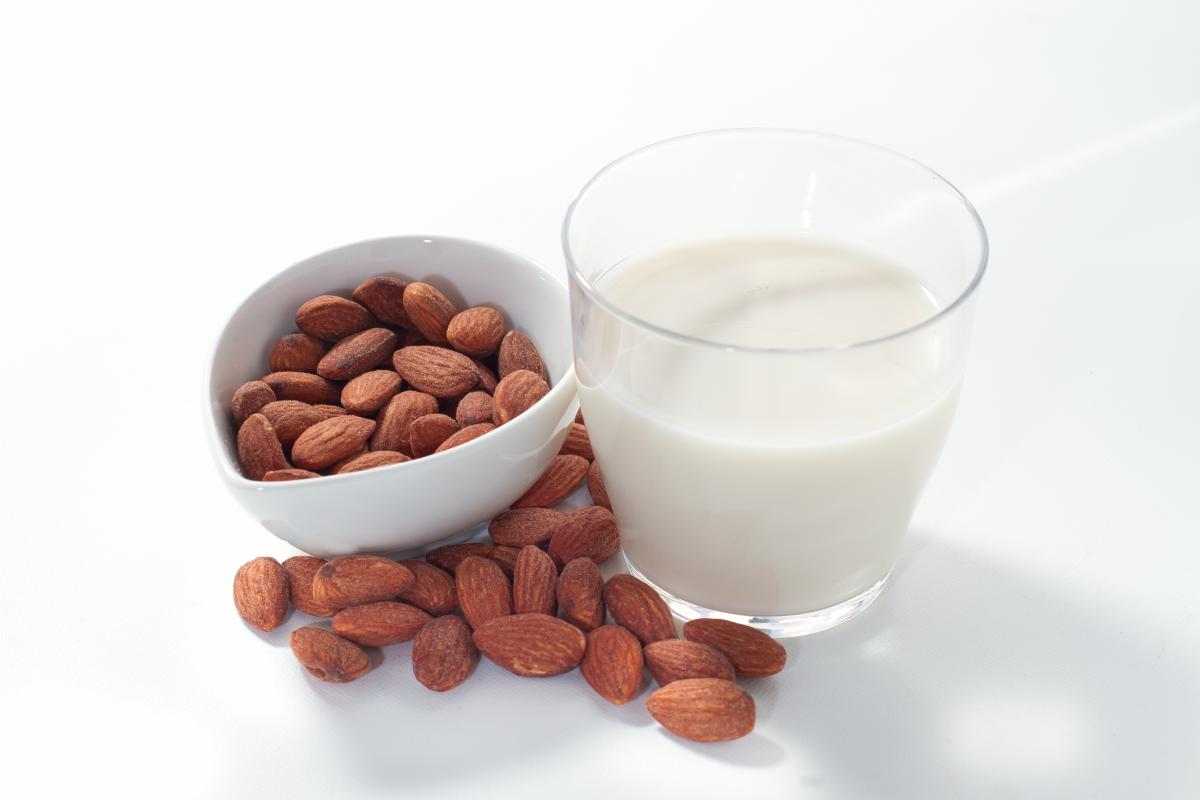 After decades of NMPF efforts to halt misleading labeling of imitation dairy foods, the U.S. Food and Drug Administration (FDA) said it’s opening a comment period this fall to review the marketing practices of plant-based foods.
After decades of NMPF efforts to halt misleading labeling of imitation dairy foods, the U.S. Food and Drug Administration (FDA) said it’s opening a comment period this fall to review the marketing practices of plant-based foods.
“The FDA has concerns that the labeling of some plant-based products may lead consumers to believe that those products have the same key nutritional attributes as dairy products, even though these products can vary widely in their nutritional content,” said FDA Commissioner Scott Gottlieb in the Sept. 27 announcement. “It is important that we better understand consumers’ expectations of these plant-based products compared to dairy products.”
The FDA comment docket is set to close just after Thanksgiving, but NMPF has requested an extension. The organization also plans to submit comments that will explain why the agency must enforce its own labeling regulations that limit the use of standardized dairy terms to products that come from an animal. NMPF also will provide its members and other dairy stakeholders information they can use to weigh in with FDA.
“We are pleased that after years of regulatory inertia, the FDA is now addressing our concerns about how these plant-based products are inappropriately marketed to consumers,” said NMPF President and CEO Jim Mulhern. “The issues raised by this docket acknowledge many of the same concerns we’ve brought to light over the last four decades: that plant-based products are packaged, merchandized and sold in the same way as real dairy foods, yet provide fewer nutrients and therefore cannot be considered suitable substitutes.”
In addition to demonstrating the superior nutritional benefits of real milk, NMPF’s comments will show how a standardized dairy food – like milk, yogurt or butter — is defined by its inherent characteristics, including how and where it is sourced, its sensory attributes, and its performance properties.
The comment period comes after a July 26 FDA public meeting on government nutrition and labeling standards, during which NMPF also made its case for government action. Gottlieb said before the hearing that the agency will address deceptive marketing tactics, and recognized the issue needs greater clarity. He has said that plant-based copycats are not the foods that have been standardized under the name “milk” and often vary widely in their nutrition.
NMPF also submitted comments on another, but related issue: the regulation of foods produced using cell-culture technology. On Sept. 27, NMPF submitted comments to FDA on the issue, suggesting that another important factor be considered within the discussion: the agency’s willingness and ability to enforce its own existing standards of identity – on these new products as well as plant-based alternatives. The U.S. dairy industry could be affected by the use of genetically modified yeast to produce proteins that share a chemical identity with milk proteins, NMPF said.






